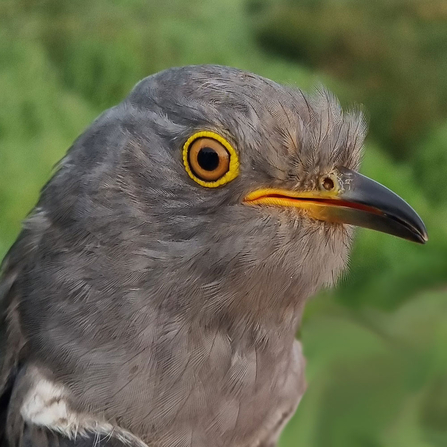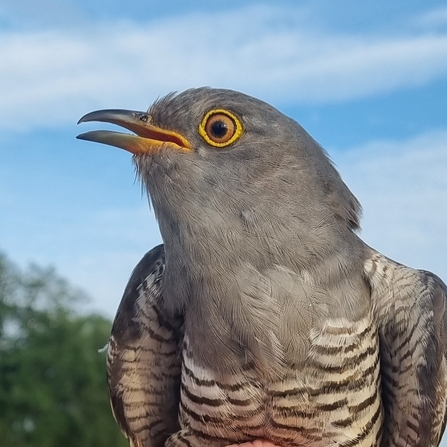The UK’s breeding cuckoo population has declined by more than a third since the 1960s, with their iconic “cuck-oo” call slowly disappearing from much of our spring landscape. With the hope of gaining a better understanding of the causes of this decline, British Trust for Ornithology (BTO) has fitted state-of-the-art satellite tags to 9 cuckoos in the UK – two of which were tagged with our North-East Suffolk team at one of our nature reserves.
Two of the cuckoos were successfully tagged at Worlingham Marshes – our newest nature reserve – in the Lower Waveney Valley within the Broads National Park. The two males tagged at the nature reserve between Beccles and Lowestoft were named Nick 2 and Wilfrid.

Nick 2, cuckoo tagged at Worlingham Marshes

Wilfrid, cuckoo tagged at Worlingham Marshes
There is little understanding of the causes of the sad decline of the cuckoo, however by following the birds on migration, researchers hope to get a better understanding of the pressures they face outside the UK.
Since British Trust for Ornithology's Cuckoo Tracking Project began in 2011, more than 100 cuckoos have been tagged and the data has revealed that many English cuckoos migrate via Spain, a route associated with higher mortality than that through Italy, which is typically used by Scottish cuckoos. After making their way across Europe, cuckoos cross the Mediterranean Sea before traversing the Sahara Desert – where they will travel at altitudes of up to 5km to avoid the extreme daytime heat of the desert.
Early research has shown that the Lower Waveney Valley - which spans from its source at Redgrave & Lopham Fen nature reserve to the North Sea at Lowestoft – is an important area for cuckoos with large areas of the landscape successfully managed for wildlife under our care and with collaborations with local farmers and landowners.
Much of our work along the Lower Waveney Valley has been made possible thanks to the support of The National Lottery Heritage Fund - who granted us £4million towards Carlton Marshes in 2018, and £2million towards Worlingham Marshes in early 2024.
Lewis Yates, Broads Warden at Suffolk Wildlife Trust, said:
“We were really excited to tag the two cuckoos at Worlingham Marshes. We get good numbers of cuckoos further down the valley around our Carlton Marshes reserve but have struggled to catch individuals recently. It has been great to hear more birds calling out at our nature reserves in the Broads, which is a great sign that our reserves are doing their bit to help cuckoos.”
Dr Chris Hewson, lead scientist on the project, said:
“It’s really fantastic to see more Cuckoos heading off with newly fitted satellite tags. These birds will help us to better understand the factors that determine their survival rates, and hence the reasons for the population declines they are undergoing in large parts of the UK. Ultimately, we need to know how we can help them to successfully complete their arduous migrations in a rapidly changing world.”
You can follow the migration journey of the individual cuckoos, including Nick 2 and Wilfrid from Suffolk, tagged on the British Trust for Ornithology’s live map:



